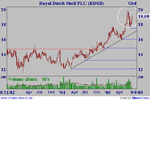SOCRATES
Veteren member
- Messages
- 4,966
- Likes
- 136
No frugi, sideways is something completely different. The volatility is not sufficiently marked in terms of being capped and supported to provide a comfortable range within which to carry out lighning raids.
It may be an indication of a respite in the proceedings in a bull phase, for example leading to even higher prices, or in a bear phase for example leading to even lower prices.
In market conditions where the intent is not clear or readable the outcome could be a reversal if for example in a bull phase the sideways drift is the result of lack of demand or in a bear phase the sideways drift is the result of supply.
Each instrument has characteristics within each market and within each market condition, but generally speaking the Racking is characterised by sharp, clearly marked Zig Zags and the Sideways is characterised by a sort of wandering, indeterminate price action.
It may be an indication of a respite in the proceedings in a bull phase, for example leading to even higher prices, or in a bear phase for example leading to even lower prices.
In market conditions where the intent is not clear or readable the outcome could be a reversal if for example in a bull phase the sideways drift is the result of lack of demand or in a bear phase the sideways drift is the result of supply.
Each instrument has characteristics within each market and within each market condition, but generally speaking the Racking is characterised by sharp, clearly marked Zig Zags and the Sideways is characterised by a sort of wandering, indeterminate price action.
Last edited:

